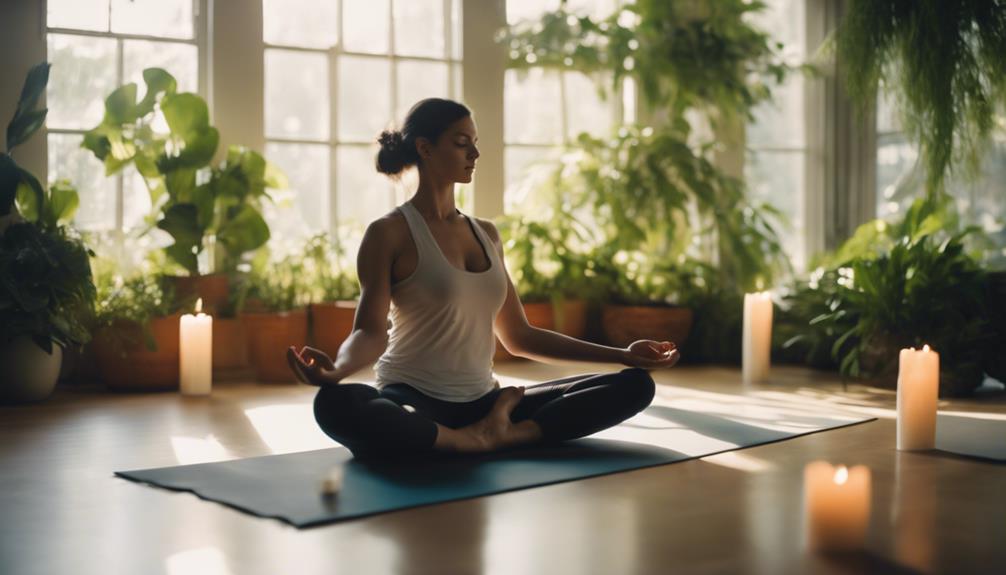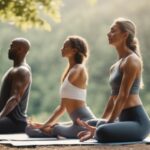Yin Yoga is a meditative and restorative practice that emphasizes stillness, deep stretching, and mindfulness. Unlike more active styles of yoga that focus on flowing movements and muscle engagement, Yin Yoga invites practitioners to hold poses for extended periods, typically ranging from three to five minutes or more. This practice targets the deeper connective tissues in the body, such as ligaments and fascia, promoting flexibility, joint health, and overall relaxation. As a result, Yin Yoga has gained popularity among practitioners seeking both physical and mental well-being.
The benefits of Yin Yoga extend beyond physical flexibility; they also encompass emotional and mental health. Regular practice can lead to decreased stress levels, improved emotional balance, and increased awareness of one’s internal state. This slower-paced practice allows individuals to cultivate patience, introspection, and mindfulness, which can be particularly beneficial in today’s fast-paced world. The combination of deep stretches and breathwork fosters a sense of grounding and peace, making it an ideal practice for those looking to unwind and reconnect with themselves.Walnut Creek CorepowerThermoplastic Elastomers Yoga Mat
Understanding the Philosophy Behind Yin Yoga Practices
Yin Yoga is rooted in ancient Chinese philosophy, particularly the concepts of Yin and Yang, which represent opposite yet complementary forces in nature. Yin is associated with qualities such as darkness, stillness, and receptivity, while Yang embodies light, movement, and activity. In this context, Yin Yoga serves as a counterbalance to more vigorous forms of exercise and daily life, promoting a sense of balance and harmony within one’s own body and mind.
The philosophy of Yin Yoga also draws on the principles of Traditional Chinese Medicine (TCM), which emphasizes the flow of energy, or "qi," through the body’s meridians. By holding poses that target specific meridian lines, practitioners can encourage the movement of qi, fostering healing and vitality. Thus, Yin Yoga not only serves as a physical practice but also as a means of nurturing the body’s internal systems and encouraging a holistic approach to health and wellness.
Key Principles and Techniques of Yin Yoga Explained
Central to Yin Yoga are its key principles, one of which is the importance of passive stretching. Unlike active forms of yoga that require muscle engagement, Yin Yoga encourages practitioners to relax their muscles while allowing gravity to deepen the stretch. This passive approach is fundamental to accessing the deeper layers of connective tissue and facilitating long-held releases.
Another significant principle is the idea of “finding your edge,” which means locating the point of tension within each pose that feels challenging yet sustainable. Practitioners are encouraged to listen to their bodies and respect their limits, ensuring that they do not push themselves beyond what feels safe. This practice of self-awareness and acceptance leads to a more fulfilling experience and promotes a deeper connection with the body.
Creating an Inviting Environment for Yin Yoga Space
Creating a conducive environment for Yin Yoga practice is crucial for enhancing the overall experience. A peaceful and quiet space, free from distractions, sets the tone for relaxation and mindfulness. Dim lighting or the use of candles can help create a soothing atmosphere, while soft music or nature sounds may further enhance the serenity of the space.
Additionally, ensuring that the temperature is comfortable—neither too hot nor too cold—contributes to a more enjoyable practice. A clutter-free environment with calming colors, such as soft blues or earthy tones, can also help practitioners feel more at ease. By thoughtfully designing the physical space for Yin Yoga, practitioners can cultivate a sanctuary for relaxation, introspection, and rejuvenation.
Essential Props and Tools for a Yin Yoga Practice
In Yin Yoga, the use of props is not only encouraged but often essential for a safe and comfortable practice. Common props include yoga blocks, bolsters, and blankets, which can help support the body in various poses. These tools enable practitioners to modify poses, making them more accessible while reducing the risk of strain or injury.
Other useful tools include straps and eye pillows, which can enhance relaxation and promote a deeper sense of calm. Straps can assist in reaching for the feet or maintaining alignment, while eye pillows can block out light during restorative poses, encouraging a meditative state. By utilizing these props, practitioners can find greater ease in their practice and explore deeper stretches without the fear of overexertion.
The Role of Breath and Mindfulness in Yin Yoga
Breath is a fundamental component of Yin Yoga, serving as a bridge between body and mind. Practitioners are encouraged to engage in deep, mindful breathing throughout their practice, focusing on inhaling and exhaling slowly and deliberately. This conscious breathwork not only enhances relaxation but also helps to release tension and foster a sense of presence in each pose.
Mindfulness is equally important in Yin Yoga, as practitioners are guided to cultivate awareness of their thoughts and sensations while in a pose. By embracing this mindful approach, individuals can cultivate a deeper connection with their bodies, allowing for greater exploration of their physical and emotional states. This awareness can facilitate personal growth and healing, reinforcing the meditative qualities that define Yin Yoga.
Common Yin Yoga Poses and Their Therapeutic Effects
There are several common poses practiced in Yin Yoga, each offering unique therapeutic benefits. Poses such as Butterfly, Dragon, and Sphinx are particularly effective for targeting the hips, spine, and lower back. Butterfly pose, for instance, gently opens the hips and encourages relaxation while releasing tension in the lower back.
Another effective pose is the supported Bridge pose, which opens the chest and promotes heart health. These poses, held for extended periods, allow for deeper engagement with the body’s connective tissues, leading to improved flexibility and overall well-being. By incorporating a variety of poses, practitioners can address specific areas of tension and cultivate a balanced physical practice.
Yin Yoga for Stress Relief and Emotional Balance
Yin Yoga has been widely recognized for its ability to alleviate stress and promote emotional balance. The slow, deliberate nature of the practice encourages practitioners to slow down, facilitating a break from the often chaotic pace of daily life. As individuals hold poses, they can observe their thoughts and feelings, creating space for processing emotions that may have been suppressed or overlooked.
Additionally, the emphasis on mindfulness and breathwork in Yin Yoga empowers individuals to cultivate awareness of their emotional states. This practice can lead to greater emotional regulation and resilience, ultimately fostering a more balanced approach to life’s challenges. Many practitioners report feeling a profound sense of calm and peace after their sessions, further demonstrating the emotional benefits of this gentle yoga style.
How to Incorporate Yin Yoga into Your Daily Routine
Incorporating Yin Yoga into a daily routine can be both rewarding and transformative. Practitioners can start by dedicating a specific time each day to their practice, even if it’s just 15 to 30 minutes. This consistency helps establish a habit and fosters a deeper connection to the practice over time.
It can also be beneficial to create a personalized sequence of Yin poses that address individual needs or specific areas of tension. By preparing a list of go-to poses, practitioners can easily incorporate them into their day, whether it’s in the morning to set a positive tone or in the evening to unwind before bed. This flexibility in practice allows individuals to adapt to their schedules while reaping the numerous benefits of Yin Yoga.
Embracing the tranquility of a Yin Yoga space offers practitioners a unique opportunity to connect with themselves on a deeper level. Through its meditative approach, Yin Yoga promotes physical flexibility, emotional balance, and mindfulness, making it a valuable addition to one’s wellness routine. By creating a nurturing environment, utilizing helpful props, and incorporating intentional breathwork, individuals can cultivate a nourishing practice that supports both body and mind. As practitioners continue to explore the depths of Yin Yoga, they may find themselves enriched not only in their practice but in their overall quality of life.


